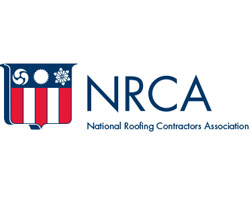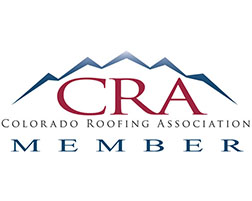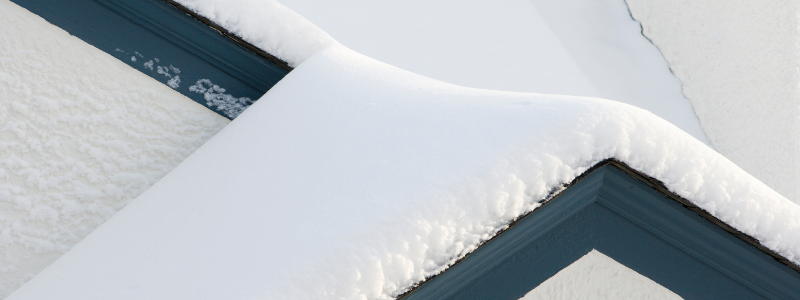
Snow Load Calculator
Every state in the United States has its snow load requirement, including Colorado.
The term “snow load calculator” refers to the weight of accumulated snow and ice on a roof. These requirements are based on the region’s recorded snowfall. When there is too much snow on a roof, and it cannot sustain the weight of that snow and ice, it will collapse.
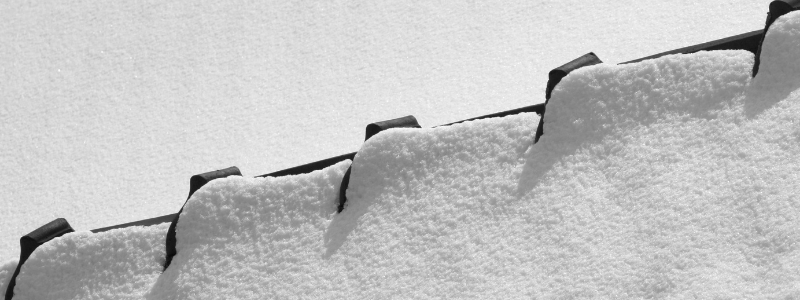
What Is A Snow Load Roofing Requirement?
A snow load roofing requirement is a requirement that dictates the amount of snow a roof in a particular state (in this case, Colorado) must be able to hold.
Due to the differences in snowfall between states, every snow load roofing requirement varies from state to state. Without snow load roofing requirements, many buildings in states that experience extreme snowfall would collapse quickly due to being unable to hold and sustain large amounts of snow.
Snow Load Requirements Vary By Region
Every state, generally speaking, experiences a different amount of annual snowfall. Colorado, for example, often receives an average of sixty inches of snow to one hundred inches, depending on the region, which is quite a bit higher than other states.
To ensure that the buildings in a particular state can withstand that amount of snow, every state has its snow load roofing requirement. A snow load roofing requirement ensures that every roof can withstand a certain amount of snow, which ensures that those roofs, and the buildings that they protect, can last for a long time.
Since the amount of snow differs from region to region, different regions have different snow load roofing requirements. An example of this is Clear Creek County in Colorado, which has a rather mountainous geography that consists of numerous elevations. Each one of these elevations, measured in feet above sea level per 250 feet, has a different snow load requirement due to the amount of snow that higher elevations experience.
A snow load roofing requirement is often measured in “Pounds Per Square-Foot”.
Every square foot on a particular roof must be able to hold and sustain a certain amount of snow and ice, and the snow and ice are measured in pounds. Clear Creek County, for example, has a snow load roofing requirement of 35 PSF for homes and buildings built at an elevation of 6,500 to 6,750 feet while also having a snow load roofing requirement of 45 PSF for built at an elevation of 7,001 to 7,250 feet.
A snow load roofing requirement is extremely important because it ensures that every roof made and set up within the state can handle the snow that a particular region experiences. Without snow load roofing requirements, many of the roofs built and used within a state would be incapable of handling the intense weather that a particular region often experiences. Because of that, they would break down and collapse rather easily.
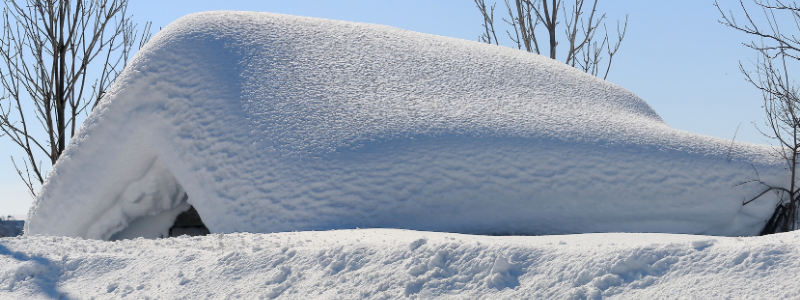
How Do You Calculate Snow Load?
Calculating your roof’s snow load is quite easy, but it consists of several steps, some of which are more elaborate than others.
The process will differ depending on the type of roof that you have – a flat roof or a pitched roof.
By calculating your roof’s snow load, though, you will be able to know just how much snow your roof can withstand and whether or not it will be able to withstand the intensity of Colorado’s winter.
Calculating Roof Pitch
To calculate the snow load of a pitched roof, you must know the pitch of your roof, which is how much it slants. To do this, you will need to measure the vertical distance between your roof’s peak and edge. Then you will need to measure the horizontal distance from your roof’s peak to its edge.
Rise and Run
The first of those measurements is called the rise, and the second is called the “run”. Once you have both of those measurements, you will need to divide the rise by the run (rise over run), and then you must convert the fraction that comes from that division into a ratio of twelve.
For example, if the rise of your roof is 30 feet, and the run is 60 feet, then the pitch of your roof is 30 divided into 60. Once you divide the sum of that division – 0.5, to be specific – into a ratio of twelve, it becomes 6:12. Your “roof pitch” would be 6:12.
Snow Load Calculator
After that measurement, you will need to use a snow load calculator. To use this calculator, you will need to input information regarding the rise and run of your roof, the pitch of your roof, what it’s made of, and snowfall for your area, among other information.
The snow load calculator for a roof is slightly more difficult to calculate since there needs to be snow on the roof for you to calculate the snow load.
Snow Cover
Once there is snow on your roof, though, you will need to measure just how deep that snow is. Doing this is easy if you use a yardstick. Take that measurement, which will usually be expressed in inches, and convert it to feet.
Right after you know the depth of the snow, you will need to gather up snow from your roof. Make sure this container is one-foot high and one-foot wide. Stuff the entirety of the container with snow, but before you do so, make sure to measure the container.
Snow Type/Density
By weighing that container of snow, you will know just how much one cubic foot of snow weighs. From this measurement, you can multiply the cubic-foot of snow based on the depth of the snow, and the size of your roof.
As an example, if one cubic-foot of snow weighs eight pounds – quite common for dry snow – and there are two feet of snow on your roof, then every cubic-foot of your roof is holding sixteen-pounds of snow. Take that measurement, and multiply it based on the square footage of your roof.
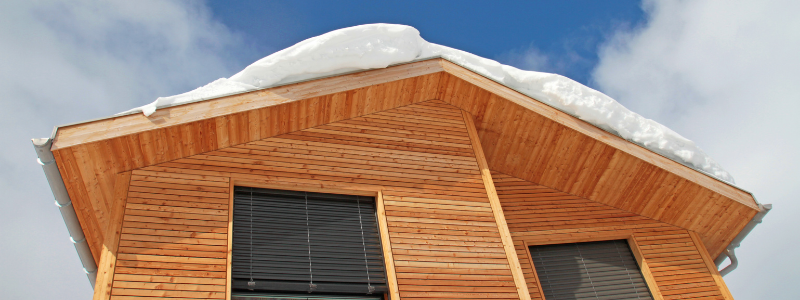
What Does B&M Roofing Offer To Help With Snow Load Roofing Requirements In Colorado?
As a local company, B&M Roofing is very familiar with all of Colorado’s snow load roofing requirements and assorted building codes. We know Colorado’s extreme weather and all of our roofing projects take that element into account.
Every single roof that we construct for your home or business will meet these building codes and snow load roofing requirements, while also fulfilling every single other requirement that is required for the durability and stability of your roof. We can also help with calculating your roof’s pitch and snow load if needed.
For a free estimate regarding our services, you can contact us here. Regardless of your roofing needs (and season), B&M Roofing is here to help.










